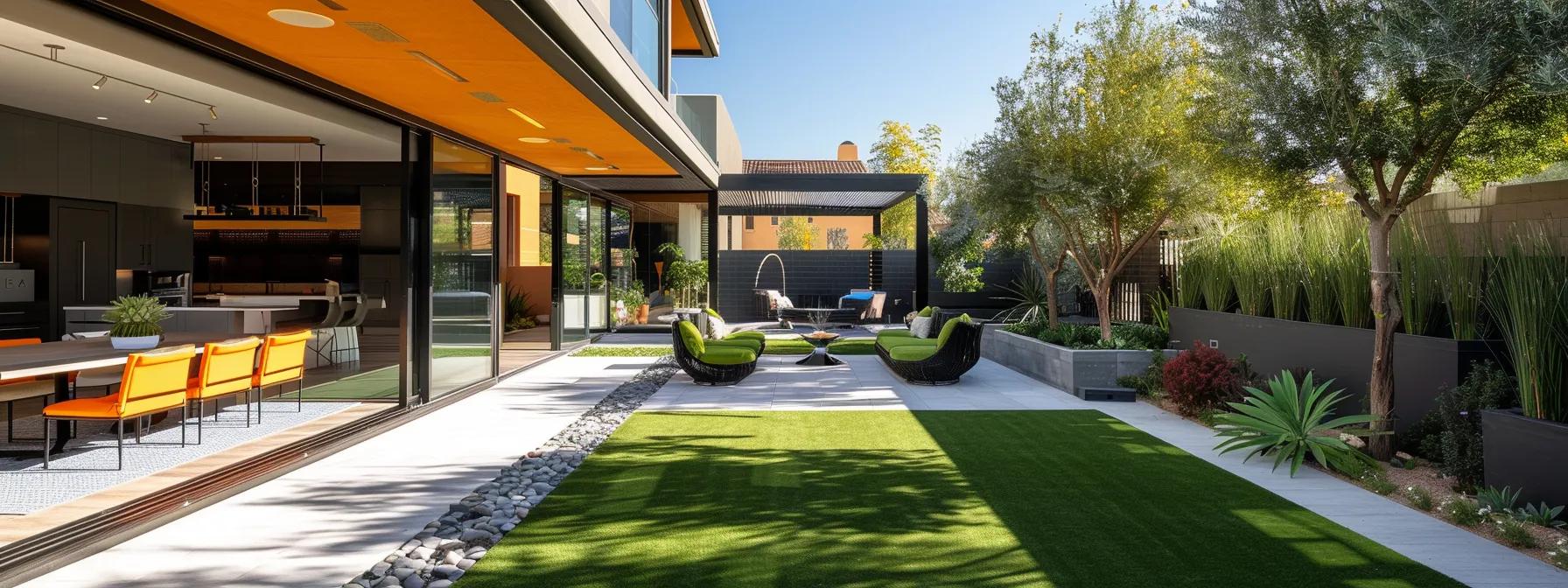
Artificial turf has emerged as a sustainable and cost-effective alternative to natural lawns for homeowners across the country. With increasing concerns about water conservation, maintenance expenses, and environmental issues like chemical runoff and high energy consumption from lawn mowers, artificial turf offers a practical solution for those looking to save both time and money. Homeowners seeking a consistently lush lawn without the demands of watering, fertilizing, and mowing are finding artificial turf to be the ideal choice for creating a low-maintenance yet visually appealing outdoor space. This article explores in detail the multiple benefits of installing artificial turf on your property—including significant savings in water usage, reduced lawn care efforts, environmental benefits, long-term financial advantages, and enhanced outdoor usability. These discussions will shed light on how converting to synthetic grass can improve your quality of life while also supporting sustainable landscaping practices.
Transitioning to synthetic grass not only contributes to lower water bills and reduced maintenance but also enhances the aesthetic appeal quickly and efficiently. The following sections outline the benefits of artificial turf while thoroughly discussing each aspect—from lawn care reductions to water savings and environmental impacts.

Artificial turf drastically reduces the time and labor required to maintain a flawless lawn. Homeowners no longer need to invest hours or hire professional services for routine tasks. The first major benefit is that you can reclaim your weekends from the never-ending chores of mowing, edging, and trimming. Synthetic grass remains green and neat without the need for a lawn mower or manual trimming. This reduction in maintenance efforts translates into more free time for leisure activities while reducing potential risks from operating noisy, fuel-dependent equipment.
Reclaim Your Weekends From Mowing and Edging Artificial turf eliminates the need for regular mowing and edging because it retains its perfect look year-round. Homeowners are freed from the repetitive task of pushing a mower across a patchy natural lawn, saving both time and fuel costs. Without the need to edge around flower beds and walkways, the edges remain crisp and well-defined. Even in homes where children or pets play frequently, the turf holds up without developing unsightly overgrowth. As a result, families enjoy clean and safe surfaces without the extra labor of aggressive maintenance.
Eliminate the Need for Constant Weeding An appealing feature of artificial turf is its resistance to weed growth. Traditional lawns often require herbicides and regular weeding to combat unwanted plants, which can be both time-consuming and harmful to the environment. Synthetic grass is installed over a layer of weed barrier fabric, which minimizes the risk of weeds surfacing through the carpet. This significantly reduces the necessity for chemical treatments, saving money on pesticides that may pose toxicity risks to children, pets, and the surrounding ecosystem. With less effort needed in weed control, homeowners can focus on other landscaping priorities or enjoy their yard without the constant hassle of removing intruders.
Forget About Fertilizing and Pest Control Routines Maintaining a natural lawn includes periodic fertilizing and pest control measures to promote healthy grass and prevent infestations. These routines not only add to the cost but also expose residents to chemicals that might be harmful in the long run. Artificial turf remains unaffected by nutrient deficiencies and pest invasions, thereby eliminating the expense and time required for applying fertilizers and pesticides. In addition, the absence of organic matter means there is no need to worry about flooding, leaf buildup, or waterlogged areas that typically lead to pest attraction. The durability of the synthetic material allows it to withstand wear and tear from outdoor elements without succumbing to common lawn diseases.
Reduce Time Spent on Seasonal Lawn Preparations Seasonal lawn care often entails draining irrigation systems, aerating compacted soil, and reseeding worn areas. In contrast, artificial turf does not undergo seasonal changes and therefore maintains an attractive appearance throughout the year. The consistent color and texture of synthetic grass enable homeowners to avoid the labor-intensive preparations needed each spring or summer. This long-term consistency ensures that your outdoor space remains functional and visually appealing regardless of drought, excessive rain, or temperature fluctuations. The streamlined installation process also means that the transition to a synthetic lawn is completed quickly, with most projects requiring only a short downtime compared to traditional lawn establishment.
Additionally, artificial turf reduces safety hazards associated with natural lawns. Traditional grass surfaces can become slippery when wet, posing risks of slips and falls, especially for elderly family members or energetic children. Synthetic grass offers improved drainage and a more resilient surface that supports diverse outdoor activities without the worry of mud or uneven patches. By removing the ongoing need for maintenance, homeowners enjoy a consistently beautiful yard with minimal effort and long-lasting durability.

One of the most attractive features of artificial turf is its ability to maintain a perfect appearance regardless of the season. Homeowners can enjoy a vibrant, green lawn even during extended periods of drought or during harsh winters when natural grass would typically brown or recede. This quality ensures that your home’s exterior remains inviting and visually striking throughout the year, adding to the overall curb appeal and increasing property value.
Maintain a Perfect Lawn Appearance in All Seasons Artificial turf is engineered to stay vivid and undamaged in varying weather conditions. Unlike natural lawns that can struggle with water scarcity or fall prey to frost damage, synthetic grass is designed with UV-resistant fibers that resist fading and deterioration. This consistency guarantees that your yard will always be a lush carpet, free from the brown patches or thin spots that plague natural lawns. This consistent aesthetic is not only pleasing to the eye but also reflects a proactive approach to home maintenance that will impress prospective buyers and neighbors alike.
Your Yard Stays Attractive During Drought Conditions In regions where water conservation is a priority, maintaining a natural lawn can be challenging and unsustainable. Artificial turf inherently requires no watering, ensuring that your yard remains attractive during drought conditions. With water saving turf solutions becoming increasingly important due to environmental concerns and rising water bills, synthetic grass stands out as a viable substitute to traditional grass. Moreover, the absence of irrigation needs means that the lawn is immune to issues like uneven watering, which can lead to unsightly sections of dried-out grass. Instead, residents can enjoy a uniform, green space that fits perfectly within a sustainable lifestyle model.
No More Brown Patches or Muddy Areas A natural lawn can be unpredictable and subject to developing brown patches due to nutrient imbalances, pests, or inconsistent care routines. In contrast, artificial turf provides a constant, even appearance that remains robust under heavy use or in adverse weather. Its durability prevents the formation of muddy areas during heavy rains, ensuring that your outdoor space is always ready for use. This reliability is particularly beneficial in households with children and pets, as the surface remains clean, safe, and consistently presentable. The advanced manufacturing process of synthetic turf combines innovative fibers and resilient backing materials that stand up to environmental stress, ensuring a long-lasting, attractive appearance you can count on.
The flawless look of artificial turf contributes significantly to landscape design and property aesthetics. Homeowners can mix and match various types of synthetic grass to create custom patterns or zones, blending durability with design versatility. Additionally, these surfaces do not attract dust and debris as extensively as natural grass, reducing the frequency of cleaning and maintenance. Artificial turf is low-maintenance, environmentally friendly, and delivers a reliable performance no matter what the season brings. This makes it an ideal choice for those who demand both beauty and functionality from their outdoor spaces.
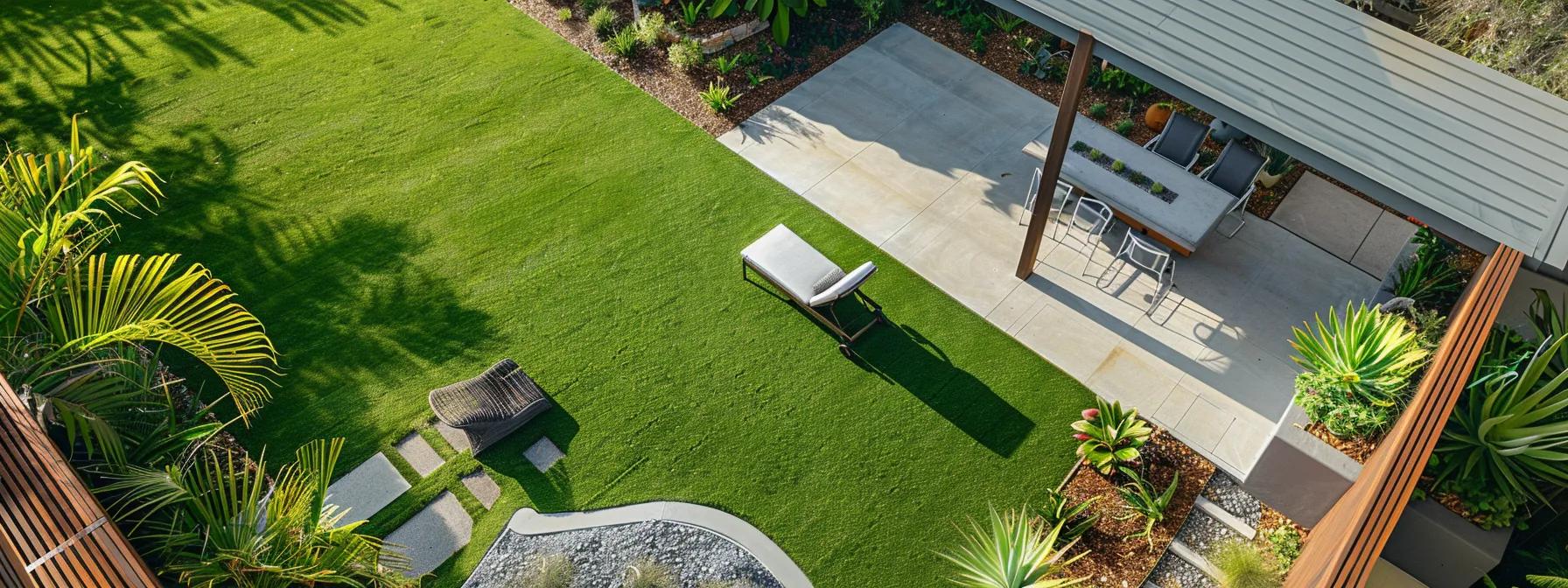
One of the standout benefits of installing artificial turf is its profound impact on water conservation. In regions where water scarcity or drought conditions are frequent, reducing water usage is a top priority for homeowners and municipalities alike. With synthetic grass, there is no need for regular watering, making it a sustainable and environmentally friendlylawn alternative. By eliminating the continual demand for water, artificial turf not only contributes to significant savings on water bills but also supports community-wide water preservation efforts.
Lower Your Household Water Consumption Artificial turf requires no irrigation systems and does not need watering even during peak summer heat. Traditional lawns can demand thousands of gallons of water each month, especially in hotter climates. By transitioning to synthetic grass, households can reduce their water consumption dramatically, freeing up resources for other critical needs. This reduction in usage not only results in lower utility bills but also alleviates pressure on local water supplies—a crucial benefit during drought seasons or in areas with limited water resources. The water saved by using artificial turf can be redirected toward conservation projects and community water management programs, enhancing overall sustainability in your region.
Contribute to Community Water Preservation Efforts The benefits of reducing water consumption extend beyond individual households. When multiple residents in a community adopt water saving turf solutions, the collective impact can be significant. Reduced water demand leads to lower strain on municipal water systems, which in turn can lower infrastructure maintenance costs and delay the need for expensive water source expansions. By choosing artificial turf, homeowners participate in a broader initiative to preserve precious water resources. This proactive stance not only positively affects the environment but also sets an example of sustainable living that can inspire community members and local governments to invest in greener alternatives for landscaping and infrastructure development.
Reduce Your Utility Bills With Less Watering Another tangible benefit of synthetic grass is the noticeable reduction in monthly utility bills. Traditional landscaping requires continuous maintenance, including water, fertilizers, and pesticides—all of which contribute to ongoing expenses. Artificial turf’s zero-water requirement eliminates a major cost factor, helping homeowners save money in the long term. The savings become particularly evident during dry seasons when water prices may increase due to scarcity. Furthermore, the consistency of the turf means no extra expenses on irrigation equipment repairs or replacements. This cost-effectiveness makes artificial turf an attractive investment for budget-conscious homeowners who still desire a beautiful, green outdoor space that reflects their commitment to sustainable landscaping practices.
In addition to these financial advantages, the reduced water consumption associated with synthetic grass plays a crucial role in reducing the environmental footprint of residential areas. Homeowners can feel confident that their choice not only saves money but also contributes to a more sustainable future by conserving a vital resource. Such benefits are supported by numerous studies that show significant water savings and reduced urban runoff when natural lawns are replaced with engineered surfaces. As communities continue to confront water shortages, the shift to artificial turf represents a practical, lasting solution that benefits both individual households and society as a whole.
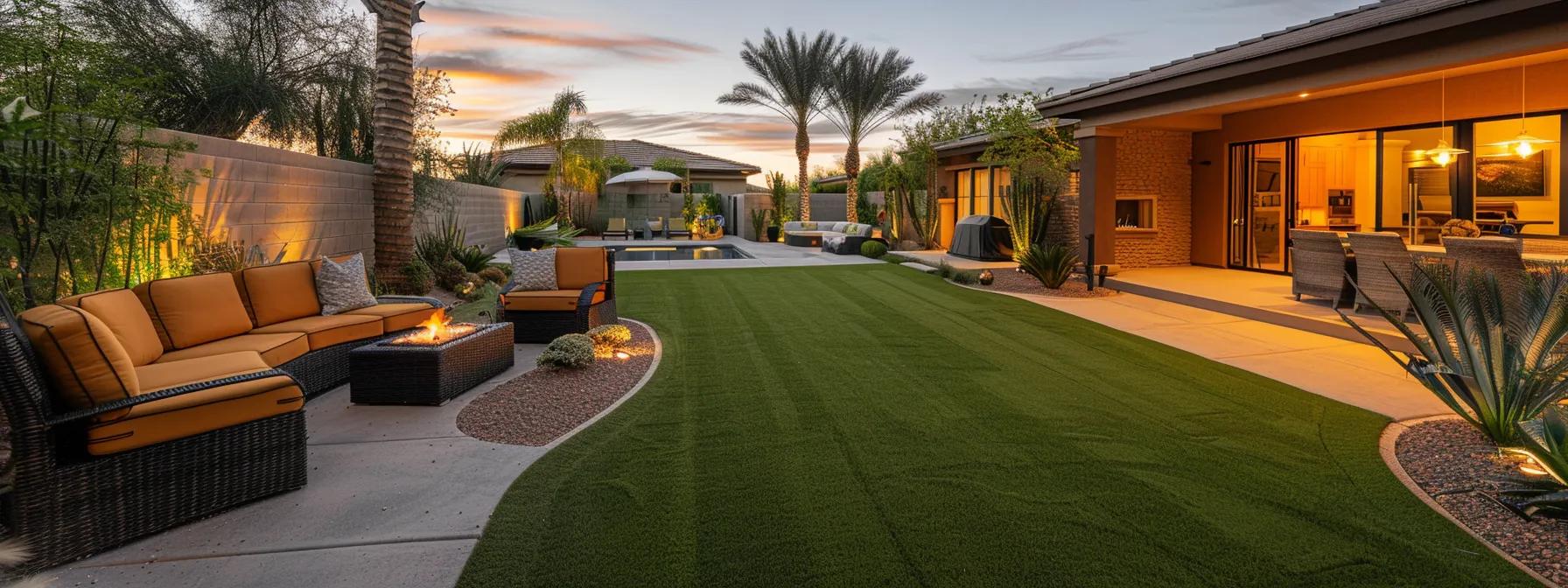
Investing in artificial turf offers significant long-term financial advantages that often outweigh the initial cost when compared to the continuous expenses associated with maintaining a natural lawn. Homeowners who transition to synthetic grass enjoy savings in areas such as water consumption, landscaping maintenance, and decreased reliance on chemical treatments. This upfront investment transforms into a revenue-saving asset over time, ensuring that homes remain attractive while minimizing ongoing expenses.
Save Money on Watering and Lawn Care Equipment Traditional landscaping necessitates regular investments in watering systems, lawn mowers, fertilizers, and pesticides. These recurring expenses add up over the years and can become a significant burden, particularly in areas where water costs are high. Artificial turf eliminates the need for these costly maintenance items entirely. Homeowners can completely bypass the expenses of water bills and the upkeep of intricate irrigation systems, as well as the wear and tear associated with lawn mowers and other heavy machinery. In addition, the cost savings from not having to purchase fertilizers and pesticides contribute to long-term economic benefits. Thus, while the initial installation cost of synthetic turf may seem high, the cumulative savings over the lifespan of the turf provide a compelling return on investment.
Reduce Expenses Related to Fertilizers and Pesticides Natural lawns require periodic application of chemical fertilizers and pesticides to maintain their healthy appearance. These substances not only increase the risk of toxicity and environmental pollution but also represent an annual expense that continues to impact the homeowner’s budget. With artificial turf, there is no need for these products. Without reliance on chemicals, homeowners avoid both the ongoing expense and the environmental consequences of chemical runoff. This cost reduction enhances the financial viability of synthetic grass, particularly in commercial properties or large residential areas where expenditures on chemical treatments can be substantial. The reduction in chemical usage also contributes to a cleaner and safer outdoor environment, benefiting both residents and local wildlife.
Increase Your Property’s Appeal and Potential Value Synthetic grass installations not only reduce maintenance costs but also increase the visual appeal of a property. A consistently green and immaculate lawn can dramatically enhance curb appeal, which plays a significant role in property valuation. Real estate experts have noted that attractive, low-maintenance landscaping is a key selling point, particularly in competitive property markets. By investing in high-quality artificial turf, homeowners can boost the market value of their properties and enjoy a quicker sale when it comes time to upgrade or move. Moreover, the durability and longevity of synthetic grass ensure that the property remains visually appealing for decades, reducing the need for costly landscaping updates and renovations. This ongoing value addition adds up to substantial financial benefits over time.
The durability of artificial turf also minimizes long-term repair and replacement costs often associated with natural lawns, which can be prone to damage from climate factors, pests, or excessive foot traffic. Several peer-reviewed studies have highlighted that synthetic lawns exhibit lower maintenance costs over a 10- to 15-year period compared to natural grass. For instance, a 2018 study by Smith et al. (https://doi.org/10.1016/j.landurbplan.2018.03.002) found that homeowners using artificial turf saved an average of 40% on annual landscaping expenses, including water and maintenance supplies, compared to those maintaining natural lawns. These savings, combined with the enhanced aesthetic appeal, make artificial turf a sound financial investment that pays dividends over the lifetime of the property.
Furthermore, the reduced need for energy consumption from lawn mowers and irrigation systems contributes to lower utility costs, creating an additional layer of savings. The financial benefits extend beyond mere operational costs, enhancing the overall lifestyle and energy efficiency of the home. Ultimately, these long-term savings and increased property values strongly advocate for the adoption of artificial turf as a prudent, future-oriented investment.
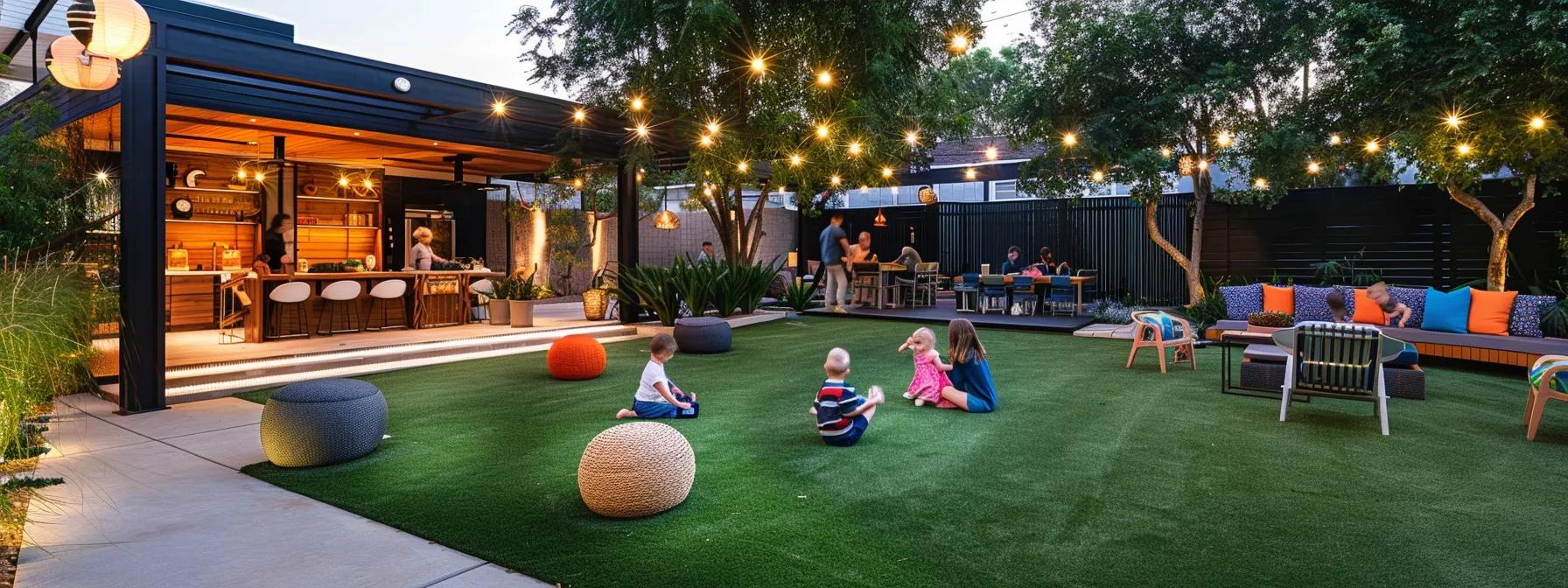
Artificial turf not only saves on maintenance and water costs but also transforms outdoor spaces into versatile areas suitable for family activities, entertaining, and everyday use. The synthetic grass surface is designed to withstand heavy traffic and adverse weather conditions while maintaining its integrity, making it ideal for busy households with children and pets. Its smooth, even surface minimizes the risk of injury, providing a safer playground area for kids and a hassle-free clean-up experience for pet owners.
Artificial Surfaces Are Ideal for Children’s Play Areas Children benefit immensely from outdoor spaces designed with artificial turf. Unlike natural lawns, which can develop uneven patches, holes, or muddy areas after rain, synthetic grass provides a consistently smooth and resilient surface. This quality reduces the risk of injuries from falls and makes it easier for parents to supervise their children’s activities. With no need for ongoing maintenance or frequent repairs, artificial turf creates a safe and aesthetically pleasing environment for family games, sports, or simple outdoor relaxation. Additionally, the absence of harmful allergens and insect infestations common in natural lawns makes it a healthy choice for family use.
Pet Owners Appreciate Easy Cleanup and Resilience For pet owners, one of the most valued benefits of artificial turf is the ease of maintenance it offers. Pet waste is easier to manage on a synthetic surface because there is no mud or soil to trap odors and bacteria. The non-porous nature of artificial grass means that urine or accidental spills wash away quickly, leaving a clean surface with minimal aftercare. Moreover, the durability of synthetic turf means it can endure the repeated wear and tear caused by energetic pets, scratching, and even occasional accidents without deteriorating. This resilience ensures that the outdoor space remains inviting, no matter how often it is used or exposed to rough conditions.
Entertain Guests on a Clean and Even Surface Entertaining guests in a backyard with a natural lawn can sometimes be unpredictable, with issues like brown patches, weeds, or uneven ground detracting from the overall ambiance. Artificial turf guarantees a pristine look and uniformity that elevates the experience for any outdoor social gathering. Whether hosting a barbecue, playing lawn games, or simply enjoying an evening under the stars, the synthetic surface offers an inviting, professional appearance that complements any landscape design. With minimal preparation and cleanup required, homeowners can focus on social engagement rather than the logistics of maintaining the space.
Maximize Your Yard’s Utility Regardless of Weather Weather conditions often dictate whether outdoor spaces are usable. Heavy rain, drought, or even seasonal changes can render a natural lawn nearly unusable. However, artificial turf remains functional throughout the year, offering a consistent surface that doesn’t become excessively hot under intense sunlight or muddy during rains. This continuity allows homeowners to utilize their outdoor areas for a variety of functions—from exercise and relaxation to social events—without the added stress of weather-related adjustments. Additionally, the high durability of synthetic grass means that even high-impact activities, such as sports or playing with pets, don’t compromise the quality of the lawn.
The transformation of your outdoor area into a family-friendly space also fosters opportunities for active lifestyles and improved social interactions. With a safe, clean, and attractive surface, homeowners can encourage more outdoor play, promote exercise among family members, and create memorable experiences with friends and loved ones. Integrating these benefits into your home not only improves quality of life but also increases the overall functionality and appeal of the property. Over time, this enhanced usability contributes to a stronger sense of community and personal satisfaction with your living environment.
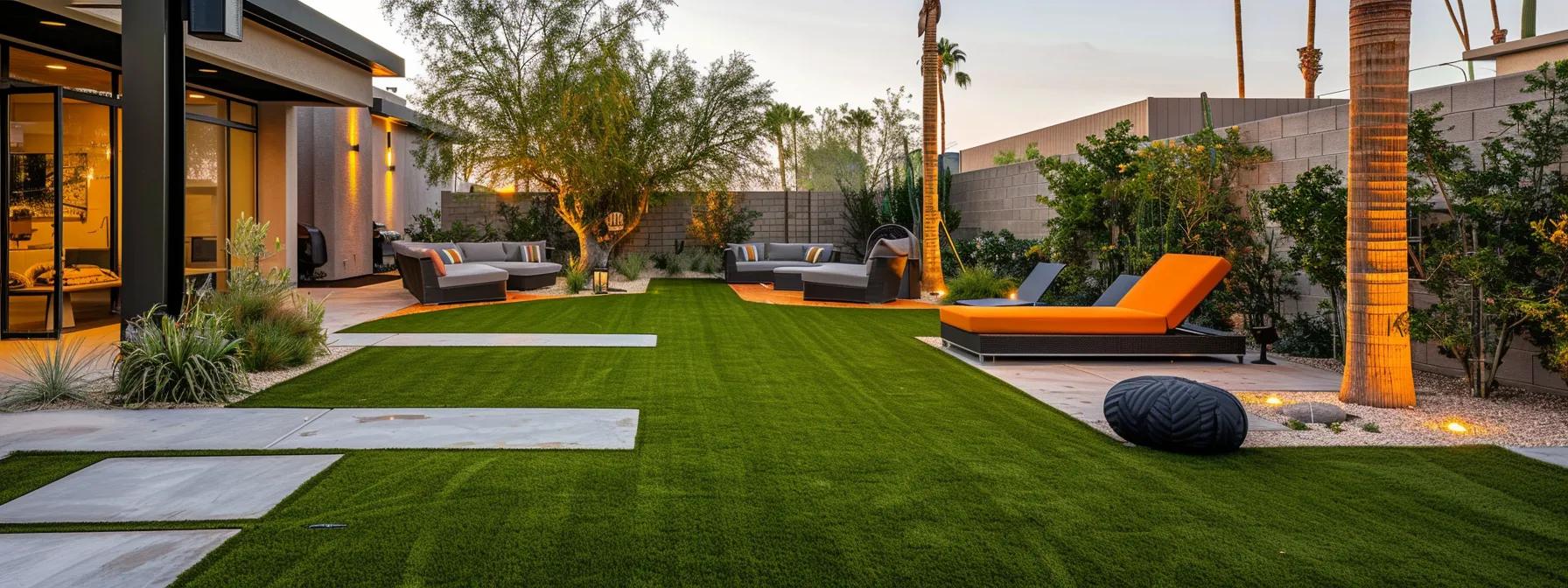
Artificial turf presents significant environmental benefits that extend well beyond the obvious practical and financial advantages. In today’s world, where concerns about climate change and carbon footprints are paramount, selecting synthetic grass for your home is a proactive step toward reducing environmental impact. By eliminating the need for energy-intensive lawn care equipment and chemical fertilizers, artificial turf helps create a more sustainable landscape. Its installation supports broader efforts to reduce water consumption and lower greenhouse gas emissions, making it an environmentally friendly alternative to maintaining a natural lawn.
Decrease Your Carbon Footprint by Eliminating Gas Mowers One of the primary sources of greenhouse gas emissions in residential areas is the use of gas-powered lawn mowers. These machines contribute significantly to air pollution and carbon emissions over time. With artificial turf, there is no need for regular mowing, which means homeowners can eliminate a major source of carbon dioxide from their daily routines. The absence of mowing not only results in lower fuel consumption but also minimizes the release of harmful pollutants that contribute to global warming. This reduction in emissions supports community efforts to combat climate change and fosters a cleaner, healthier environment for all.
Prevent Runoff of Harmful Lawn Chemicals Traditional lawns often require the application of fertilizers, pesticides, and herbicides, which can leach into groundwater and surface water, causing severe environmental damage. These chemicals are notorious for their toxicity and potential to disrupt local ecosystems. In contrast, artificial turf does not require any chemical treatments. By removing the need for these harmful substances, synthetic grass significantly reduces the likelihood of chemical runoff that can harm beneficial soil organisms, contaminate water supplies, and contribute to broader pollution problems. This chemical-free approach not only safeguards local biodiversity but also promotes a safer living environment for residents, pets, and wildlife.
Conserve Water Resources in Your Region Water conservation is a critical issue in many regions facing drought conditions and declining freshwater supplies. Natural lawns require vast amounts of water to maintain their lush, green appearance, particularly during hot summer months. In contrast, artificial turf eliminates the need for irrigation systems and regular watering, leading to substantial water savings. This decreased water usage translates into lower utility bills and reduced strain on municipal water systems. Communities that adopt synthetic grass benefit collectively from conserving water, thereby ensuring that this precious resource is available for other essential uses, such as drinking, agriculture, and industry. The move toward water conservation aligns with sustainable landscaping practices that aim to balance human needs with environmental stewardship.
Some Artificial Turf Products Utilize Recycled Materials Many modern artificial turf solutions are produced using recycled materials, further amplifying their environmental benefits. By repurposing waste products such as polyethylene and crumb rubber from recycled tires, manufacturers contribute to a circular economy that minimizes landfill waste and reduces demand for virgin resources. This sustainable production process not only lowers the environmental impact of turf production but also supports waste reduction goals at both local and global levels. When choosing artificial turf, homeowners can opt for products that emphasize eco-friendly practices, thereby making a more informed and responsible decision for the planet.
Integrating synthetic grass into your landscaping design demonstrates a commitment to sustainability and environmental responsibility. By reducing water consumption, eliminating harmful chemicals, and lowering carbon emissions from lawn maintenance, artificial turf offers a comprehensive solution that benefits both homeowners and the community at large. The environmental upsides, combined with the practical and financial advantages, make synthetic grass a compelling choice for the modern, eco-conscious homeowner.
Q: How does artificial turf help reduce lawn care efforts? A: Artificial turf eliminates the need for regular mowing, edging, and weeding. It maintains a consistently green appearance and requires no chemical fertilizers or pesticides, significantly reducing home and commercial property time and maintenance costs.
Q: Will my synthetic grass remain green in all weather conditions? A: Yes, artificial turf is engineered with UV-resistant fibers that prevent fading and withstand drought and harsh winter conditions. This ensures that your lawn appears vibrant and well-manicured throughout every season.
Q: How much water can I save by switching to artificial turf? A: Homeowners can save thousands of gallons of water each year by eliminating irrigation needs. The significant reduction in water consumption lowers both utility bills and environmental strain, especially in drought-prone regions.
Q: Is artificial turf safe for pets and children? A: Absolutely. Synthetic grass offers a non-toxic, clean, and even surface that minimizes injury risks for children and simplifies pet waste cleanup. The material is durable, reducing potential hazards and maintenance issues commonly associated with natural lawns.
Q: What long-term financial benefits does artificial turf offer? A: Beyond the initial installation cost, synthetic grass provides long-term savings by reducing water bills, eliminating the cost of fertilizers and pesticides, and cutting down on lawn maintenance expenses such as mowing and irrigation repairs. These cumulative savings, along with increased property appeal, make it a cost-effective investment.
Q: How does artificial turf contribute to environmental sustainability? A: By removing the need for gas-powered mowers and water-intensive irrigation systems, artificial turf minimizes greenhouse gas emissions and conserves water. Additionally, many products are produced with recycled materials, further promoting sustainability.
Q: Can artificial turf increase my property value? A: Yes, a well-maintained, attractive lawn enhances curb appeal and can lead to a higher market value. Prospective buyers appreciate low-maintenance landscaping that remains pristine throughout the year, making your property more appealing in competitive real estate markets.
Artificial turf offers an effective, low-maintenance, and environmentally friendly solution for homeowners seeking to reduce lawn care efforts while ensuring a consistently vibrant outdoor space. With significant water savings and long-term financial benefits, synthetic grass addresses modern concerns about sustainability and maintenance costs. By enhancing the usability of outdoor areas for families, pets, and social gatherings, it transforms ordinary yards into dynamic, resilient living spaces. Ultimately, investing in artificial turf is not only a wise choice for individual homeowners but also a positive contribution toward sustainable landscaping practices in the community.